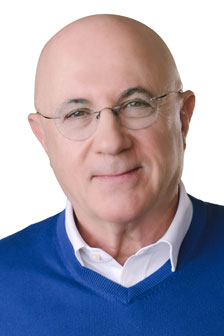A Housing Bubble? No. Not This Time.

It has been a turbulent time for home sales. An inventory crisis has wrought meteoric home price growth. We now face rising mortgage rates, a widening affordability gap, super-charged inflation, tumultuous geopolitical events affecting the global supply chain, and a severe societal and cultural schism.
It’s natural to think the run-up in home prices over the past two years cannot continue when buying power is being squeezed. The devastating impact of the housing collapse of 2008 is still of recent memory. Accordingly, fear of a housing bubble, a housing crash is understandable.
By way of background, I don’t just write about these issues. It’s has been my life’s work. Prior to becoming a REALTOR® in this, my post-retirement 2nd career, I practiced real estate law from 1979 to 2010. I conducted thousands of home purchases as a closing/title attorney. My clients included the RI Association of REALTORS®, RI Housing & Mortgage Finance Corporation, and numerous other banks, mortgage lending companies and Real Estate Brokers. For over 43 years, the last 11 as a REALTOR®, I’ve had a first row seat, strike that, on the stage as a principal in the real estate industry.
Today’s housing market is different from 2002 – 2007, the year’s leading up to the 2008 collapse. At that time, deregulation in the financial industry led to easy credit for many homebuyers who would not normally qualify for a loan. It created tremendous demand, a rush to buy. Investor speculation pushed prices higher. The speculator, often a neighbor, a first-time investor with no prior history and no-doc verification subprime adjustable-rate loans. When those loans adjusted to a higher rate, payments increased dramatically. Far too many owners, unable to afford the increased monthly payments went into foreclosure. The foreclosures dumped 6 million homes on the market, prices plummeted to levels far below the value of the indebtedness on the mortgages. Buyers walked. It shook the financial industry to its core. Big Banks deemed “Too Big To Fail”, we’re bailed out. Government to the rescue. It was called The Troubled Asset Relief Plan (“TARP”), created by the US Treasury to stabilize the financial system, restore economic growth, and mitigate foreclosures from the 2008 financial crisis.
The housing market today is not 2008. Credit standards are high. Most homeowners today have equity, many lots of it, able to absorb a decrease in home prices without losing all their equity.
Over the past 70 years, the only housing crash we have experienced is the bubble of 2008. There have been corrections, but a bubble? Only once. 2008.
As I write this on Friday, June 10, 2022, it has just been reported that the Consumer Price Index (“CPI“) hit 8.6%. Highest rate since 1981. I purchased my first home in 1981, a Baby Boomer, like today’s Millennial, entering my prime homebuying years. It was a time of even higher inflation than today, 13.5%. At that time the Federal Reserve, as it is doing now, increased the federal funds rate to control inflation. Mortgage rates approached 19%. Notwithstanding, in 1981 the housing market did not crash. It did cool down. Today, conditions are more aligned with 1981, than 2008.
Historically, rising mortgage rates, currently at 5.25%. do not result in home prices falling. It does have a deleterious effect on affordability, pushing more families to the sidelines or into rentals. Not good. It is a proximate cause, as reported by the Mortgage Bankers Association, for mortgage application volume dropping 6.5% this past week to a 22 year low. For far too many, affordability has been and continues to be an unresolved 50-year impediment to actualization of the “American Dream” of homeownership.
But a housing bubble? No. Not this time. Rising mortgage rates do not create a bubble. Mortgage rates go in cycles, up and down. When up it tends to slow the rate of appreciation, increase days on the market and supply. When rates go down it tends to work the reverse. Whereas, home prices, the need for shelter, almost always trend up. Once purchased, a home becomes a fixed asset, whose value historically increases through appreciation and refinancing when rates go lower.
This is not 2008. Rather it has all the hallmark vestiges of 1981. Prices will continue to go higher, notwithstanding rising mortgage rates. The good news is that rising mortgage rates will cool down the hyper-rate of appreciation.
What we have today is an inventory crisis, a lack of supply driven home price crisis. In Sarasota County, as of the end of May, the median sold price of a resale single family home increased 1% from April to $490,000, 17% year over year, 722 homes for sale, 0.9 month of inventory based on closed sales, days on the market averaged 16. Although inventory in May was on par with April 2022, and higher than any month since January 2021, it remained stubbornly way too low.
We need to get back to May 2019 levels, when we had 2,432 homes for resale, a 3 month supply, 79 days on the market, 7% annual appreciation. Only growing inventory through increased listings and higher mortgage rates will get us there. But it is going to be a crawl, not a fast walk.